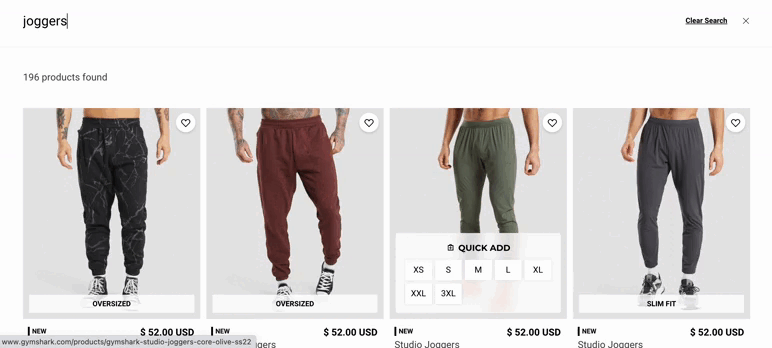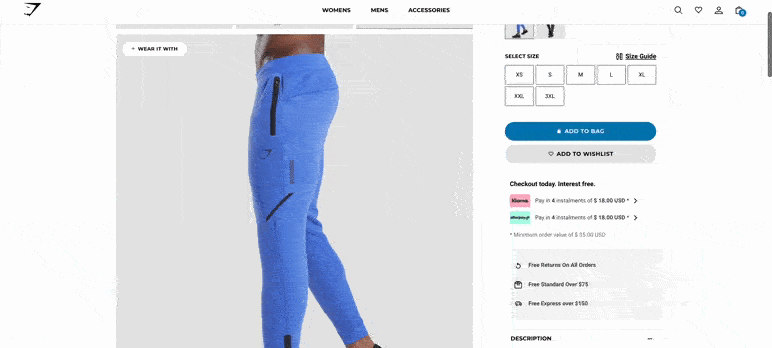For today’s retail consumer, search is not just about typing in queries. It’s about clicking on products, filtering on categories, and browsing through multiple product views, vivid layouts, promotional items, and customer reviews.
And now, it’s also about recommendations. Online retailers have learned the importance of recommending related, not just relevant products. They’ve learned that offering related products that fall outside of a query are nonetheless consistent with a consumer’s buying intent.
However, for recommendations to be successful, they must be meaningful – which can only come from a model-based, machine-learning recommender system. Luckily, retailers don’t need to know how to build those models themselves. Models and machine learning should come standard out of a search engine’s box.
Getting started
Retailers should not need to do much to implement recommendations, except collect and analyze the right analytics and know how to display recommendations in the most effective way.
There are four elements to consider when getting started with recommendations:
- The journey. Every online retail journey should include recommended products.
- The timing. Recommendations should appear at just the right moment.
- The quality of the recommendations. A machine-learning recommender system builds its models by:
- Collecting user behavior events likes clicks and conversions (add to cart, buy), to learn the individual and aggregate the tastes of customers
- Using product categories to build filter-based relationships
Then what?
- The implementation. Since recommendations come out of the box, there are only two tasks for the retailer:
- Gather data with analytics, using single-line code snippets that capture a consumer’s activities. It’s the same as implementing Google Analytics.
- Build the web and mobile interfaces that display the recommendations.
The journey – from search to merchandising to recommendations
As already suggested, we expect a lot from a search bar. To be more precise, we want speed – search results need to appear instantaneously, preferably as we type. And we want relevance – the results need to be spot on.
But online businesses like Spotify, Airbnb, and Amazon don’t stop there. They’ve transformed the search bar into a comprehensive browsing, content management, and merchandising experience, cleverly named searchandising. Searchandising brings together a wealth of components like facets, category pages, multiple product views, carousels, banners, and much, much more – all of which multiply the onscreen options for the consumer.
However, in today’s explosive digital economy, even that is not enough. Leading online retailers have (machine) learned how to incorporate a powerful new dimension – recommendations. Recommendations allow online merchants to show its users, subscribers, and shoppers the products that complement and refine their current selection. A recommender engine is the final touch of an exhaustive, profitable search and discovery experience.
And there’s no turning back – any competitive online search and discovery platform must now include the capacity for both searchandising and recommendations. Our focus here is on recommendations.
Recommendations add related items to relevant results
A recommender system is not just an add-on to search. It’s a natural expansion of search relevance into a more robust sense of relatedness. As people search and interact online, it’s only natural that they be given all relevant information, including complimentary content, which, though not always matching their queries, is nonetheless deeply, meaningfully relevant to their buying intent.
Meaningful recommendations, when presented seamlessly to the consumer, not only increase revenue in unexpected ways, they can significantly shape a shopper’s buying choices. Consumers desire more options and are therefore happy to be guided to those options in a thoughtful way as they search.
Recommendations in action!
Gymshark has seamlessly transformed an engaging search experience into a full discovery experience with recommendations. It begins with a query. In the below GIF, search results change as the user types a query. That’s always the first criteria, speed. The second criteria is relevance, which the user can confirm easily by seeing easy-to-read results, with images, titles, and prices, and a streamlined screen layout.

Next step is for the consumer to select one or more items to view. In this case, the consumer clicks on the blue joggers:

The design of the product view page encourages the consumer to scroll, where they see more photos, a video, and customer reviews. And at the bottom, the recommendations.

Note that Gymshark has thoughtfully added the recommendations to the bottom of these pages, to avoid distracting the user from viewing the product. After all, the goal of a product page is for the consumer to convert, not just continue shopping. However, maybe this is not the consumer’s desired product. At that point, they can use the search bar or back button – or, they can select a recommended item.
The consumer sees two sets of recommendations at the bottom of the page:
- “Wear it with”, which displays products that the user can purchase with the joggers. In this case, different kinds of shirts – t-shirt, tank top, a sports shirt:

- “You might like”, which displays items that the user might like because they are viewing this item. In this case, other kinds of joggers.

Recall:
- Timing matters: Recommending joggers at this point in the journey, when the user hasn’t yet decided, makes sense.
- It doesn’t have to be joggers. It can be any item. Each business chooses their own recommendations model. For example, if the user decides to buy the jogger, the next set of recommendations can be based on “What people (like you) have also bought with this item”.
Before getting into how all this works, let’s summarize the journey:
- The speed and relevance of the query directs the consumer to a screen full of jogging pants
- The product view page gives the consumer full and vivid information about the jogging pants, undisturbed by merchandising or recommendations
- The recommendations appear at the right moment, displaying complementary yet still relevant products only after the user has viewed the joggers
How it works
Why do recommendations work so well? There are several methods used to generate recommendations:
Collecting user behavior with event-based analytics (a “user-based collaborative filtering” model)
The most powerful recommendations come from user preferences. Learning user preferences helps the recommender system segment customers into profiles, allowing it to personalize its recommendations for each user.
Consumers indicate their preferences in several ways, for example, by clicking on specific items in the search results, adding an item to a cart, and of course, buying a product. As the system collects these preferences, it begins to discern patterns of relatedness, for example, which products do certain users view and buy together. Profiles come from combining these various preference signals (clicking, viewing, converting).
Capturing a large amount of click, view, and conversion activity can help the recommender machine create sharply-defined groups. For example, extreme sports enthusiasts perform significantly different activities (clicks, conversions, etc.) from bicyclists.
It’s called user-based collaborative filtering, because prior user behavior is aggregated and “collaborates” to form profiles for future users. The expectation is that the next customers will see recommendations based on profiles that are consistent with the actions they take.
Categorizing products (a “content-based filtering” model)
A standard search-based feature is filtering, where users click on categories and facets to filter their search results. For example, if a Gymshark customer wants to see only blue joggers, they can filter the results by “color = blue” and “type = joggers”. Or they can filter by price or brand.
Filters can also be used to generate recommendations. Recommendations leverage filters in a similar way, by creating a network of related products and categories. For example, “type=joggers” can be set up as related-to “type=sport t-shirts”.
This is called content-based filtering, because the model uses the content, as opposed to user behavior, to determine the recommendations.
Hybrid
It’s worth mentioning that most systems combine the behavior-based and content-based models, to provide even more targeted, robust recommendations.
Using manual overrides (“rules”) to insert merchandising into their recommendations
As a machine learns, by collecting more and more data, the business might also want to have some control over the recommendations. They usually do this with rules that push specific products under certain conditions. Here are some example use cases where it might make sense to manually override the automated recommendations:
- To ensure that related products include products from the same category as the viewed product
- To exclude a specific product or out-of-stock products
- To recommend a specific product, such as a newly launched product, by pinning it to the first position
Get started now
With Algolia’s hosted Search and Recommender APIs, companies like Gymshark are empowered to offer their users a complete Search & Discovery journey, entirely unique to their business. Gymshark chose to add “You might like” and “Wear it with” recommendations, but other companies can come up with their own formulas that work for them. What will you come up with?
AI Search
The results users need to seeAI Browse
Category and collection pages built by AIAI Recommendations
Suggestions anywhere in the user journeyAdvanced Personalization
Tailored experiences drive profitabilityMerchandising Studio
Data-enhanced customer experiences, without codeAnalytics
All your insights in one dashboardUI Components
Pre-built components for custom journeys












